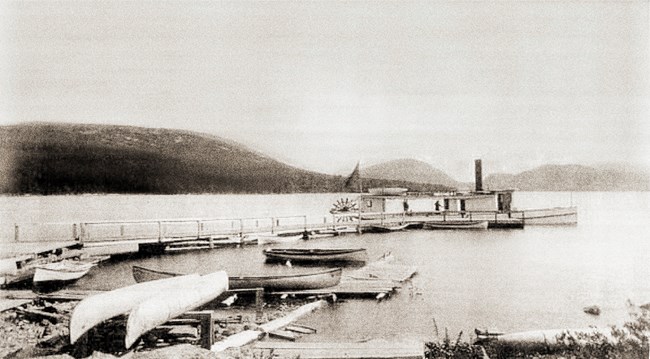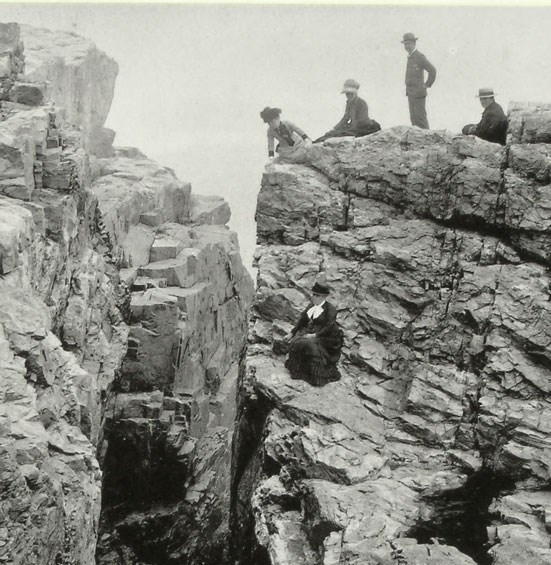
Art and TourismArtists and journalists—who revealed and popularized this island to the world in the mid-1800s. Painters of the Hudson River School, including Thomas Cole and Frederic Church, glorified Mount Desert Island with their brushstrokes, inspiring patrons and friends to flock here. Following in the footsteps of Cole and Church came other artists such as Clement Drew, Julia Whiting, and Sanford Robinson Gifford who sought to capture the relatively unknown beauty of Mount Desert Island. Soon after these artists exhibited their work in major cities such as Boston, New York, and Philadelphia, tourists began arriving by steamboats and yachts, establishing the village of Bar Harbor as a popular resort in the summer for the wealthy elite. 
The Rusticator Era BeginsUndaunted by crude accommodations and simple food, these tourists sought out local fishermen and farmers to put them up for a modest fee. Summer after summer, the 'rusticators' returned to renew friendships with local islanders and, most of all, to savor the fresh salt air, beautiful scenery, and relaxed pace. Soon the villagers' cottages and fishermen's huts filled to overflowing, and by 1880, 30 hotels competed for vacationers' dollars. Tourism was becoming the major industry. Wabanaki people, resilient in the face attempted genocide, adapted and marketed basketry and other crafts to tourists as they continued to be pushed off of their native land by the growing European population. 
Women RusticatorsIn the 1860s, a young, entrepenuring woman named Clara Barnes Martin ventured to this island outpost. Taking the long boat ride from her home in Portland, Maine with her publisher father, Martin penned the first known guide to Mount Desert Island, Mount Desert on the Coast of Maine in 1867. The publication would go through six editions and added to the growing popularity of the area as an adventurers dream. Martin wasn't alone in her adventuring. Many women in bustle skirts and high heals scrambled up the rocky cliffs of Mount Desert Island during the rusticator era.
Courtesy National Park Service/Acadia National Park Affluence on Mount Desert IslandFor a select handful of Americans, the 1880s and the "Gay Nineties" meant affluence on a scale without precedent. Mount Desert Island, still remote from the cities of the east, became a retreat for prominent people of the times. The Rockefellers, Morgans, Fords, Vanderbilts, Carnegies, and Astors chose to spend their summers here. Not content with the simple lodgings then available, these families transformed the landscape of Mount Desert Island with elegant estates, euphemistically called "cottages." Many of these weather summer residents formed the civic groups that eventually founded Acadia National Park.
Art, adventure, and tourism continue to be major influences on Acadia National Park and the surrounding communities. Acadia's Artist-in-Residence program is one of the many vibrant aspects of the arts community in the local area. Tourism remains a major driver of the local economy, as well as many of the inequalities that can trace their roots to the beginning of the rusticator era.
|
Last updated: November 1, 2023
